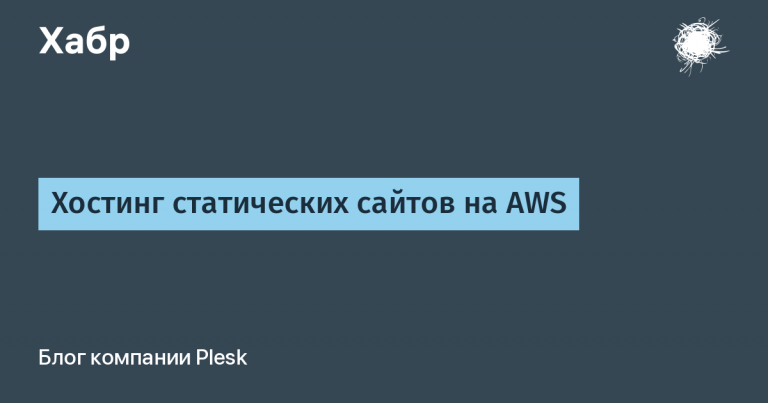Is a government deficit budget always evil?
Let's consider this simplified model. There is the state and there is the private sector. They forgot about the different stock markets there. There is no foreign trade (or its trade balance is strictly zero, the amount of exports is equal to the amount of imports). Reproduction is simple. That is, the result is an almost closed and non-developing (not changing over time) economic system.
Then, if there is a completely natural tendency in the private sector to live within one’s means and also a desire to save a little, the overall balance of the private sector, income minus expenses, will be positive (that is, the balance of the private sector is in surplus). But so that the system does not degrade and the overall production of goods and services does not decrease, the amount of money in circulation should also not decrease (and in the presence of inflation, it should even increase).
And the only way in such a system to keep the amount of money in circulation is to ensure that the public sector spends more than its income. That is, there must be a deficit state budget that compensates for the outflow of funds into the savings of the private sector. Where will the state get the money for its expenses that exceed its income? Yes, it will print them (issue them) itself, that’s where it comes from.
However, it turns out there is an economic theory that describes the functioning of the monetary system, which confirms the same conclusion (The government budget deficit is a source of funds for private sector savings) and for real economies.
This is the so-called Modern Monetary Theory (in short – MMT), also known as Modern Monetary Theory (in short – MMT).
Unfortunately, I was unable to find a strict and consistent description of this theory, which would also be presented in a popular manner. They describe more specific details, albeit important ones, but they sometimes hang in the air without proper justification. Mostly individual conclusions are emphasized or criticized.
However, as it seems to me, it is possible to identify certain postulates of SDT (MMT), the totality of which represents the complete basis of this theory. And, let’s draw such a parallel, just like Euclid’s geometry with its five axioms, MDT (MMT) is valid where and when these postulates are observed.
These are the postulates:
1. The state is financially sovereign.
2. The state, represented by the Government, the Central Bank and the entire banking system, is the issuer of the national currency, which has the right to issue the national currency without any external restrictions.
3. Taxes, as obligatory payments in national currency, make the national currency in demand among exchange participants, and they are also one of the regulators of aggregate demand in the private sector.
4. From the point of view of the movement of money in circulation, the income of any participants in economic exchange follows the expenses of other participants.
5. To analyze the movement of money in circulation, the concept of sectoral balances is used. All exchanges involving money are grouped into transactions (income-expenses) of the public sector, private sector and external sector. The total balance of these three sectors is zero.
Some clarifications
In SDT (MMT), a state is considered sovereign if it meets the following criteria:
– Has its own currency, not tied to other currencies or goods.
– This state has no foreign currency debts that it cannot pay off by printing its own currency.
Examples of countries considered completely sovereign in this sense are the USA and Japan.
But although the conclusions of MDT (MMT) are fully applicable only to sovereign states, the conclusions from the main postulates of this theory are in practice valid to one degree or another for other countries too. The only question (and this is a general consideration for all postulates of SDT (MMT)) is how much the reality in a particular country deviates from the model postulates of this theory. If not much, its conclusions will be valid with some accuracy for these countries too.
About the right to issue. Despite the fact that the MDT (MMT) declares the right to issue national currency without any external restrictions, there are internal restrictions on the volume of emission and the theory immediately draws attention to this. This limitation on emissions is the amount of available labor and material resources of the state.
On the equality of the total balances of the state, the private sector and the external sector to zero. Strictly speaking, it should not be zero for the following reasons: in addition to the contour of money in circulation, there are other contours of money circulation where money goes into circulation and where money comes from. This is the same savings circuit, these are the financial and stock markets, and finally the banking system. In addition, the economy is growing, industry proportions are changing, which also affects the required and available amount of funds in circulation.
At the same time, as follows from economic statistics, despite the open circuit of money in circulation, in practice this total balance (income – expenses) of the three main sectors of the economy is indeed approximately equal to zero (Khazbi Budunov: Who gave us money? What is modern monetary theory and why it is important for Russia
https://snob.ru/entry/182220/ ).
Some conclusions from SDT (MMT)
1. The very possibility of saving in the private sector is ensured by the deficit of either the state or external sectors, or both in combination. The desire to reduce the state budget deficit to zero or make it surplus, without taking into account the existing balances of other sectors of the economy, is a harmful idea. Moreover, the budget deficit can also be a source of investment in economic development if it finances the costs of expanding production, and it is provided directly or indirectly by emission (for example, commercial banks buy OFZ, and they receive funds for this in the form of loans from the Central Bank of the Russian Federation ).
2. There will be no inflation from the issue of money used to cover the budget deficit as long as there is free production capacity or The budget deficit is used for targeted economic development programs, including programs to ensure full employment.
3. Taxes are not a source of budget expenditures. Therefore, governments do not need to tax first in order to spend later. Everything works in exactly the opposite way than we used to think – governments spend money on goods and services, and then, in parallel, collect established taxes and adjust tax rates in order to manage demand in the economy in the long term and maintain the level of government budget deficit that is needed other sectors of the economy.
4. The default of a sovereign state for purely economic reasons is impossible in principle. If it happens, it is an exclusively political decision. A government that can borrow in its own currency has an unlimited ability to pay for things it wishes to purchase and make promised future payments, and also has an unlimited ability to provide funds to other sectors of the economy. Thus, the insolvency and bankruptcy of this state for economic reasons is impossible. It will always be able to pay.
5. The entire concept of MDT (MMT) is based on the understanding of money as signs in the system of accounting for transactions of exchange of goods, services, and debts, and not on the traditional understanding of money as a separate resource. However, such an understanding is not the exclusive prerogative of SDT (MMT). More details here: “The concept of the essence of money. What does her understanding give us?https://dzen.ru/a/Zgud0TP62DgEJ-65?share_to=link
In other words, from the point of view of MMT, we can say that in understanding how the economy works at the macro level, we are somewhere in the time of Galileo Galilei. We still have the Sun revolving around the Earth, money causes inflation, all deficits must be turned into surpluses at some point, and all debts must be reduced. MDT (MMT) turns this distorted, inverted picture of the economy upside down and puts it on its feet.
Case studies
There are several examples of countries that, to one degree or another, have applied certain ideas close to MMT:
1. Japan has been pursuing a policy of massive fiscal stimulus for many years. Despite huge public debt exceeding 200% of GDP, interest rates remained very low, consistent with the MMT logic of the ability of sovereign currency countries to borrow at low rates.
2. USA. Although the US government does not officially support MMT, the Fed's massive quantitative easing programs after 2008 were similar to MMT's mandates.
3. China. There are similarities between China's economic policies and the principles of MMT. China is actively using fiscal spending and central bank financing to stimulate economic growth.
Limitations of SDT (MMT) and general conclusions
SDT (MMT) does not describe:
– expanded reproduction;
– social aspects of many of its conclusions;
– the possibility of loss of confidence in the national currency due to excessive money emission to finance government spending, including the long-term nature of unlimited growth of government debt. And accordingly, it has no mechanisms for restoring such trust.
There is a widespread superficial understanding of MMT that supposedly it is possible to finance green energy and any social programs without limit. MMT (MMT) apologists are overly optimistic about the possibilities of fiscal policy, supposedly providing more opportunities than the usual influence of the banking system.
Thus, MDT (MMT) is perhaps not a comprehensive macroeconomic theory, but it does provide an interesting, unconventional view of the perspective and principles of constructing fiscal and monetary policies of the state.
Its value does not lie in specific recommendations, but primarily in changing the view of the very foundations of the functioning of the monetary system.
additional literature
Behind:
“MMT for UBI: what is the modern theory of money and how it follows from it that Russia can afford a universal basic income” (https://habr.com/ru/companies/ruvds/articles/566522/) or
“MMT and growth theory. Conclusions for Russia” (https://telegra.ph/mmt-05-07 ).
And against
S. Blinov “Three questions for MMT” (https://dzen.ru/a/YP2-fTuTmlH6Pqx8





